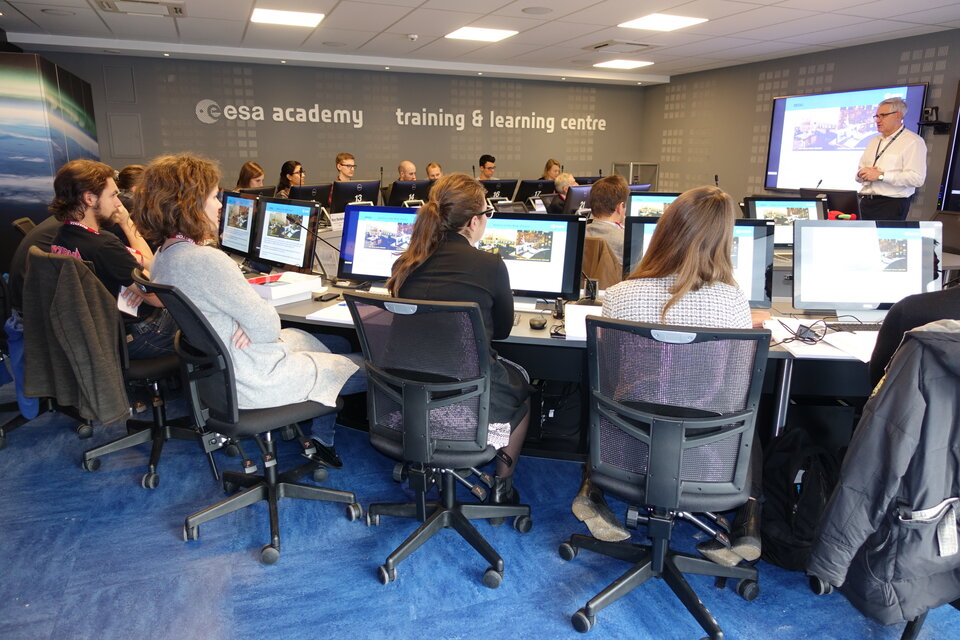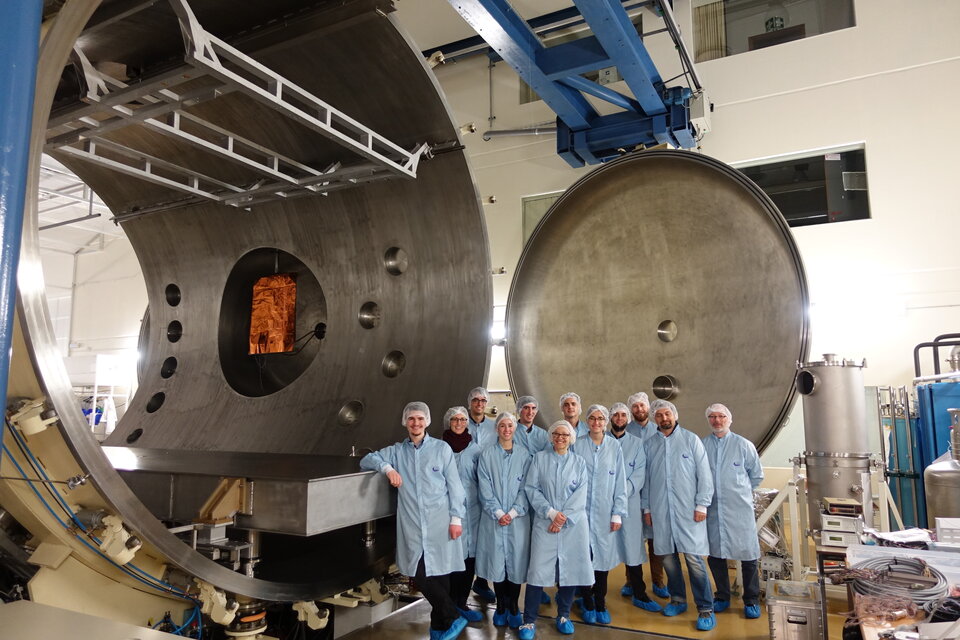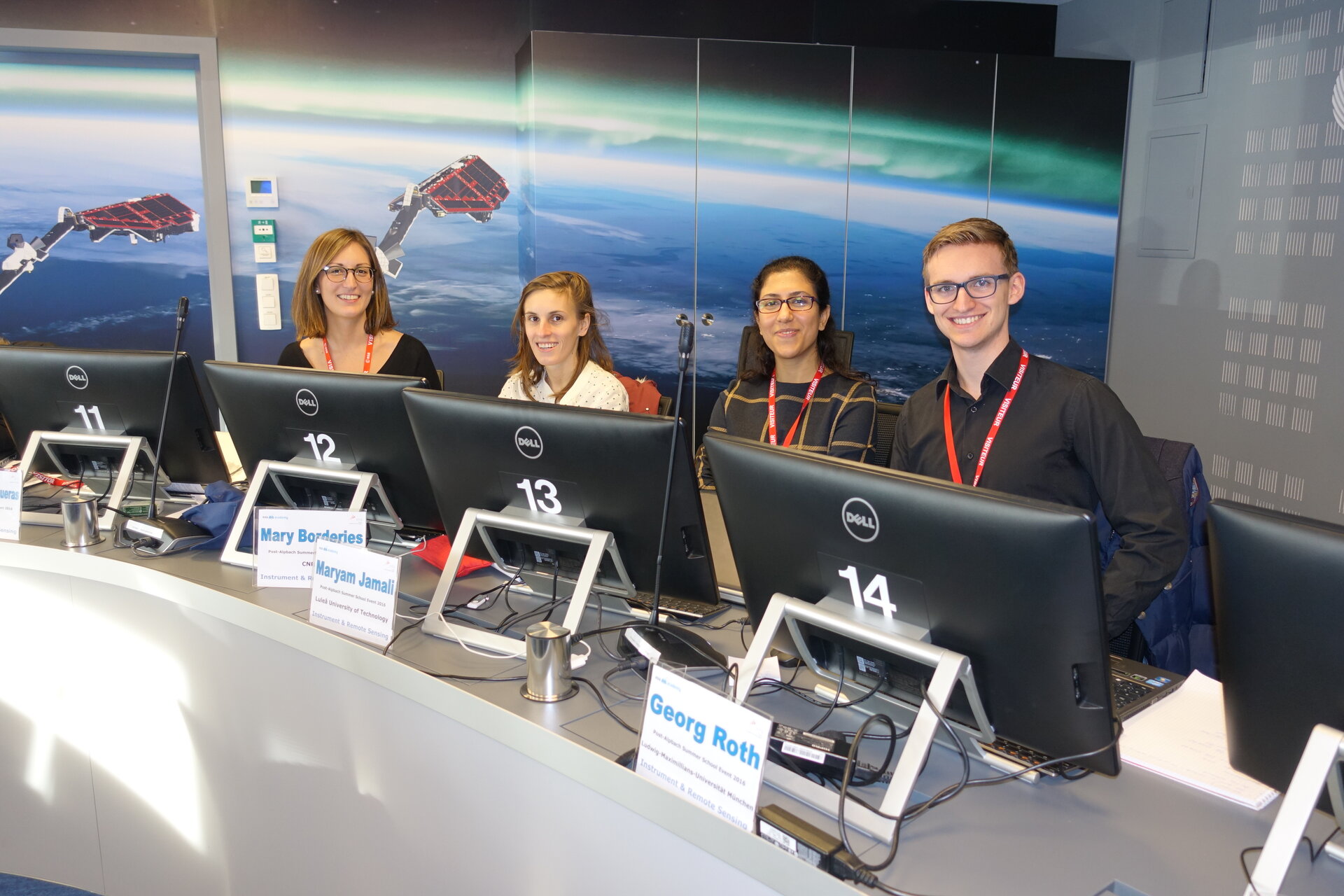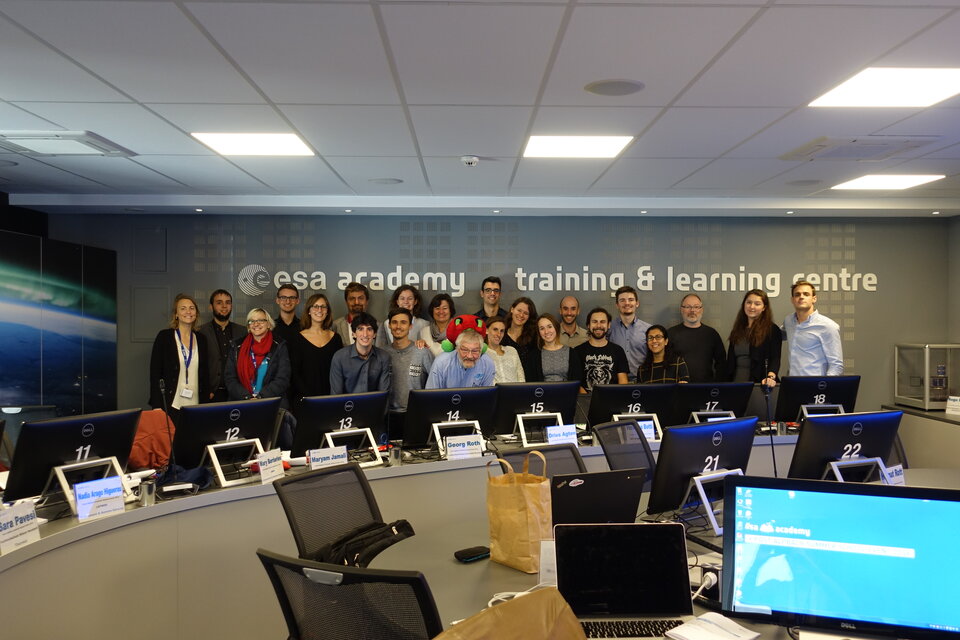Summer School Alpbach Students successfully optimised a space mission
Back in the summer fifty-eight students took just 10 days to design four space missions. Now, fifteen of those students have revisited one of those mission concepts and this time it took them just 4 days to optimise its design.
Each summer for the last 40 years, thanks to the Austrian Research Promotion Agency (FFG) and ESA, an annually selected group of around 60 students have gathered in a mountain village for the Summer School Alpbach. In the magnificent landscape of the Austrian Tyrol, the Summer School students have been offered an advanced training and working experience on different topics of space science. 60 students in four teams are conceiving innovative satellite missions. This has advanced the experience of European graduates, post-graduates, young scientists and engineers in the space sector.
Then, students were invited to apply to the Post-Alpbach Summer School event, an add-on to the Summer School Alpbach to carry on with one of the Alpbach missions, in which the main objective was to improve on the original design of the space mission elaborated in Alpbach. This year's edition took place for the first time at ESA Academy’s Training and Learning Centre in ESA Redu Centre in Belgium.
The Summer School Alpbach 2016 was dedicated to ‘Satellite Observations of the Global Water Cycle’. Divided into four teams, the students supported by tutors worked intensely to define and design innovative satellite missions on that topic and one of those was PoPSAT.

PoPSAT (Polar Precipitation SATellite) is a new satellite mission designed to observe snow and light rain at mid-latitudes, and snowfall at high latitudes using a radar to provide 3D information. The measurements will complement NASA’s Global Precipitation Measurement (GPM) mission's observations. By filling this gap, PoPSAT will provide essential data for improving global weather and climate models. And it has all been designed by students.
During the Post-Alpbach event, the students were guided by four tutors, who brought a wealth of experience to the task, having worked, between them, on ESA space missions such as Cassini/Huygens, Rosetta, SMOS, Mars Express and the ExoMars Trace Gas Orbiter.
It was a welcome invitation for the chosen students. “After the Alpbach experience, from which we obtained a very satisfactory feeling, we all wanted to continue the mission and what a better place to do so than the ESA Academy Training and Learning Centre. We have been using the most advanced hardware and software to improve the PoPSAT mission and we have spent a nice week in Redu,” said a student from Spain.
During this week, the main result that the students achieved was a dramatic reduction in the mass of the satellite. This meant it could be launched on a smaller Vega rocket rather than the original, larger and more costly Soyuz.

Using the Concurrent Engineering approach, in which all aspects of a mission are considered simultaneously, they discovered that the original estimation for the amount of fuel was too large. This reduction then led to a decrease in the mass and bulk of the spacecraft, which had a knock-on effect that reduced the mass even further.
“I thought the ESA Post-Alpbach event was great for gaining experience in the area of space engineering. Working together concurrently with 15 other students, you learn indirectly about all aspects of mission design and learn how the OCDT (Open Concurrent Design Tool) system works, which is great for the CV,” said a student from the UK.
At the end of the event, the students gave a final presentation, which was held at the Centre Spatial de Liege (CSL) (add link), in front of around 15 professionals from the CSL, the University of Liège (ULg) and ESA.
“I was happy to witness the Post-Alpbach team 2016 enthusiastically working on the PoPSAT mission at the ESA Educational Concurrent Design Facility in Redu – an enriching new experience for the Summer School Alpbach and another fruitful close cooperation between ESA and FFG with a common goal: to support the next generation of space scientists and engineers and to engage them to pursue space careers,” says Michaela Gitsch, FFG (Summer School Director).
It is a view that is shared by ESA. “Again the magic of Alpbach has struck, but this time at the TLC in Redu. It was truly impressive to witness the students working at the CDF and to eventually hear about the progress they made with their mission design thanks to the tools and expertise received from a series of ESA experts,” says Hugo Marée, Head of Education and Knowledge Management Office, ESA.
That magic will continue again next year but before then, the ESA Academy will be busy with other training courses. To see the current opportunities on offer, click here or contact esa.academy @ esa.int.



